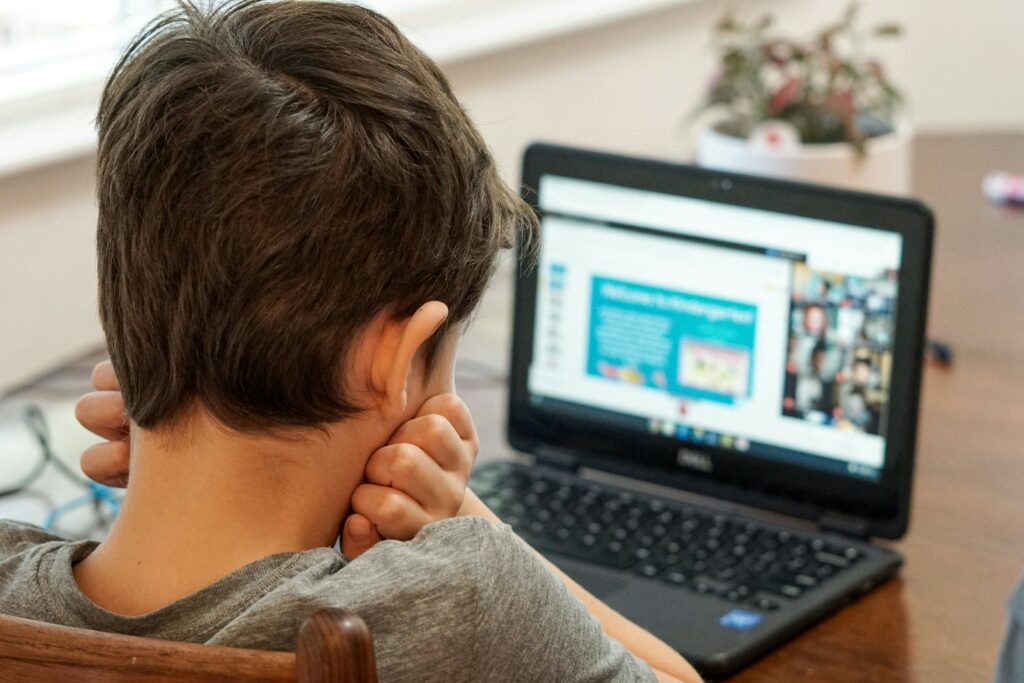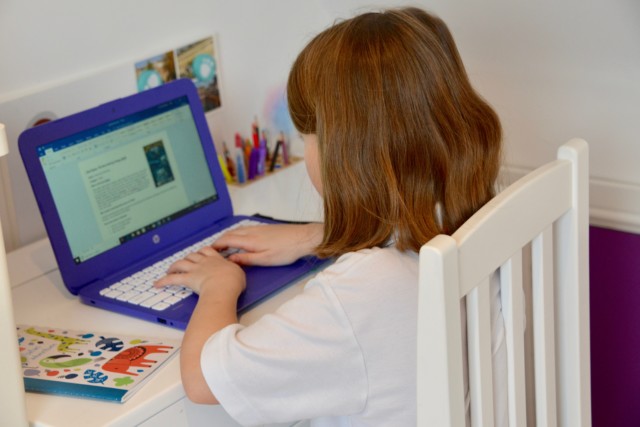In today’s world, it is nearly impossible to avoid technology. Children are growing up in digital households for the first time in history. A common concern for many parents is understanding when and how to best introduce their children to computers and the online world.
Whether you plan to invest in a desktop set for the entire family or hope to shop on-sale laptops, establishing and enforcing healthy and safe computer and internet usage will allow every member of your family to enjoy and embrace the numerous benefits they offer.

Photo by Niclas Illg on Unsplash
Infants (0-2)
As your baby begins to explore the world around them, you will notice them pushing buttons and responding to the various sounds of their toys. Don’t let this interest fool you into believing they are ready to navigate a computer.
Children under the age of 3 are still in the early stages of their physical and cognitive development, which means they are not yet ready to use a computer. Instead, it is crucial to use their early years to foster technology-free experiences. These experiences, such as face-to-face interactions, outdoor play, and real-world exploration, play a vital role in their overall development and should be prioritised.
Preschoolers (3-5)
During preschool, children spend more and more time mimicking the people around them, often wanting to engage in the same behaviour they observe. This age range is a fantastic time to start teaching children the basics of using a computer, which include how to use a mouse, what happens when you push keyboard buttons, and the correct posture for sitting in front of a screen.
While children this age do not need their own computer, downloading a collection of simple and educational games they can play and enjoy under parental supervision is worthwhile.
Early Elementary (6-8)
When your child heads off to kindergarten, the world of technology and computers will likely become more accessible. In today’s digital world, more schools are incorporating technology into the classroom as a modern teaching device for classroom activities.
As children begin to incorporate the Internet and computers into their schoolwork, teachers and parents need to work together to teach them the power of the Internet and how to navigate this tool safely and appropriately.
Tweens (9-12)
When kids reach their tween years, they will start asserting their independence in many aspects of life, often including their time on the computer. At this point, they should be well-versed in how to properly use a computer and reasonably familiar with the online world.
However, children this age still lack the proper judgment needed to stay safe online and can struggle to stay focused on any task they need to complete. As a parent of a tween, it is your job to keep a close eye on their computer usage and screen time while still allowing them to spend time on a computer independently. Ensure your anti-virus and safety settings are up-to-date and set correctly, and enforce any guidelines you have in place for using technology in your household.

Photo by Thomas Park on Unsplash
Teenagers (+13)
In today’s society, teenagers are incredibly well-versed in using technology to create content and explore the world around them. At this age, you need to find the perfect balance between independence and parental overviewt. This allows your child to freely use their computer to play games and talk to their friends while still dedicating the time needed to complete important schoolwork and other essential tasks.
Furthermore, teenagers often need structure and guidelines to use their computers and access the Internet safely and productively. Many experts recommend sitting down with your teenager to discuss screen time limits, parental controls, and safe online browsing.
Things to Consider
Whether your child is three or 13 years old, it is worthwhile considering three additional points to make the computer experience safe and enjoyable for your entire household.
Create a Central Usage Space
Set up a central space in your home where your children can use the computer. This space should have an ergonomic design that encourages comfortable and appropriate posture. It should also be in a part of your home where you can keep an eye on them if necessary.
As your children get older, knowing their parents could walk past at any moment will keep them accountable for their computer habits. This setup can be assessed as needed once your children are older and more responsible.
Install High-Quality Anti-Virus
Before you allow your children to access the computer, you must install high-quality and reputable anti-virus software that will filter and block nasty viruses and other dangerous and harmful content that your child may encounter.
Set up a regular schedule to run scans and update the software as needed. Furthermore, ensure your child understands the importance of not clicking any popups or unfamiliar ads that may appear online.

Photo by Annie Spratt on Unsplash
Practice What You Preach
One of the best ways to enforce online safety on your children is by leading by example. Follow the guidelines you have created for them regarding the content you view online, and limit your screen time to promote technology-free activities and outdoor hobbies that take you away from the screen.
Children learn best by mimicking the actions and behaviour they see. Practice good habits and encourage them to do the same. Once they head to bed for the night, you are free to binge your favourite streaming service or scroll through social media guilt-free.








Leave a Reply